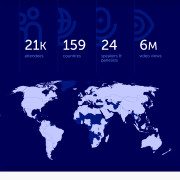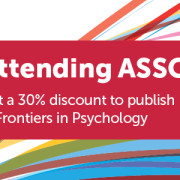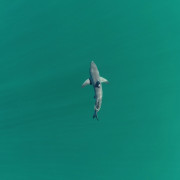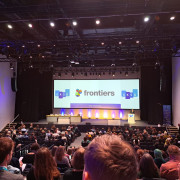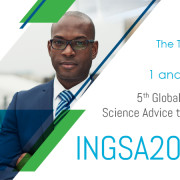- Science News
- Psychology
- Solving the last remaining mysteries of the mind
Solving the last remaining mysteries of the mind
By Michelle Ponto, science writer
Many of us love a good mystery, but the mystery Professor Axel Cleeremans is trying to solve is one of the last remaining mysteries of the mind. As a Research Director with the Fonds de la Recherche Scientifique (F.R.S.-FNRS) and a professor of Cognitive Psychology at the Université Libre de Bruxelles, Cleeremans has spent most of his career working on the differences between what we can do with and without consciousness.
“There are things we can learn in the absence of consciousness; natural language is a good example. Babies seem to pick up on the ability to speak without formal instruction,” he explained. “But there are other things that are not done without awareness. You cannot do 172 times 27 if you are not conscious. I am interested in the differences between what happens with and without consciousness.”
Cleeremans, who is the Field Chief Editor of Frontiers in Psychology, says he is mostly interested in consciousness itself. He wants to know how the brain’s activity produces the subjective experiences that we enjoy in the world. In other words, how does the brain create that technicolor movie which appears in our minds as soon as we open our eyes? He says so far, no one has a good understanding about how the brain’s biological activity produces these subjective experiences, and it’s these experiences that are known as consciousness.
**“**It is one of the last remaining mysteries. It is on par with the origin of the universe. Once we understand that, it will have consequences over the way we think about ourselves and also artificial intelligence,” he said.
The difficult question of “why”
He says the truly difficult question is the “why”. Already there are powerful computers capable of recognizing faces, processing language, solving complex problems and all of this takes place without awareness. Like these computers, our brains are biological machines and how they work biologically, we do understand. “There is nothing mysterious about how the brain works. We understand it in biological and neuroscience research, but there is a gap between what the brain does and what it feels for us to be us. And that is the mystery,” he said.
While no one has a good theory as to “why”, there are plenty of interesting, similar theoretical suggestions, and Cleeremans says some have achieved a consensus on how to bridge the gap. However, the theories are only theories. No one is certain to what the answer is yet – and when that happens, it will be huge step towards understanding consciousness.
Cleeremans does believe researchers are becoming closer to understanding consciousness especially with the introduction of imaging tools. The first ones were developed in the early 1990s, and they offered the community a new tool to look into what the brain does, and to connect what we see through the technology and brain activations. “This changed the game. It opened up this possibility that one could begin a hunt for the neural correlates of consciousness and find those regions of the brain whose activity correlates with what people say they feel,” he said.
Decades of research and still hunting
To date, the hunt has not been successful, but it has changed the field due to the merging of interdisciplinary convergent thinking about the issue. Philosophers are now talking to neuroscientists on the topic, and both have read many of the same papers. Because of this, Cleeremans believes there has been progress in the last 20 years, but that no one feels like they are getting close to solving the mystery. “It is an intangible phenomenon. Whatever consciousness is has to come out of the activity of the brain,” he said.
Consciousness is also unique for every person. Cleeremans says this is because what it means for you to be you is determined by your own trajectory through existence. He says all experiences leave a trace in your brain. You may forget things, but that doesn’t compare to not having experienced it at all. “If you assume that consciousness comes out of the activity of the brain, as each brain is unique, each consciousness is going to be unique,” he explained.
New technology could unlock new clues
As technology advances, there will be more developments in brain imagining methods and also more developments emerging from the intersection between artificial intelligence and cognitive psychology and neuroscience. Already, powerful learning algorithms make it possible to better simulate some aspects of the brain and as they improve, more stimulations can take place.
But will these new developments make it possible to solve the mystery of consciousness? “I don’t know,” Cleeremans said. “But they will certainly give us new tools to use and new ways to think about it.”
A few of Axel Cleeremans’ published papers:
Iowa Gambling Task (IGT): twenty years after – gambling disorder and IGT
The influence of articulatory suppression on the control of implicit sequence knowledge
The radical plasticity thesis: how the brain learns to be conscious

